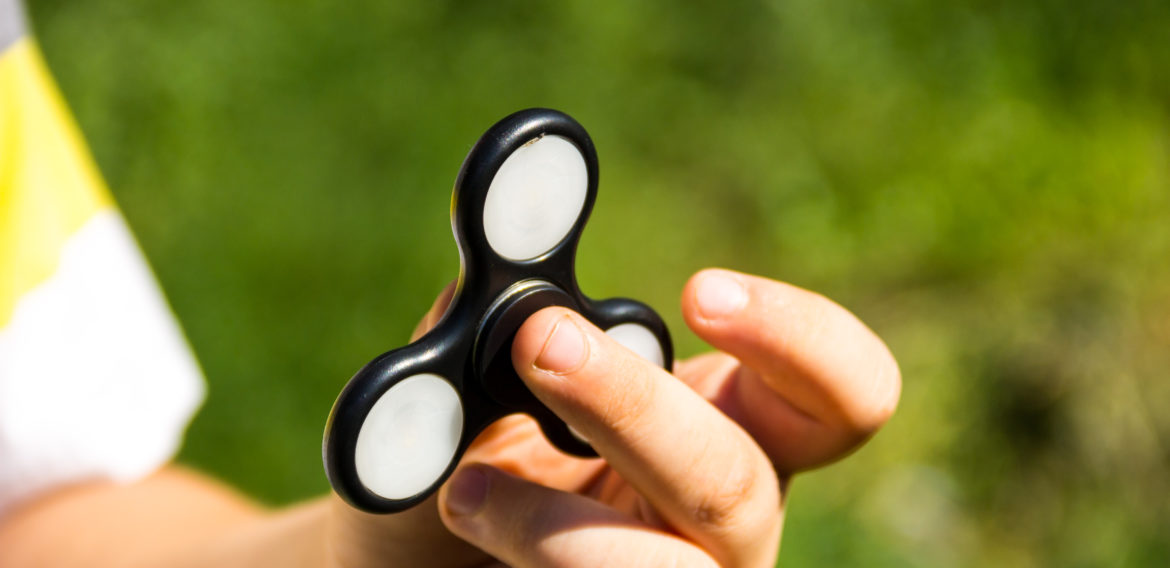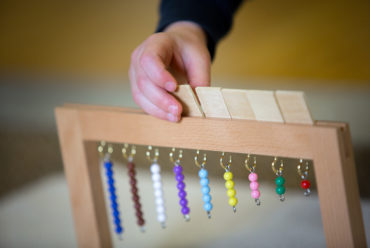Montessori & ADHD
 As a teacher, I have always prided myself on being successful with the “busier” children, the ones who move and wiggle constantly, the ones with stronger impulses than regulation skills, the ones that need the extra attention. I always knew that those children were the most rewarding for me because they challenged me to teach them in different ways every year. Yet, at the moment that I realized my son had Attention Deficit Hyperactivity Disorder or ADHD, I can vividly remember where I was and how heavy it felt. At that moment, it all clicked; his emotions that seemed over the top, his newly developed anxiety, his struggles with First Grade that didn’t exist in Kindergarten.
As a teacher, I have always prided myself on being successful with the “busier” children, the ones who move and wiggle constantly, the ones with stronger impulses than regulation skills, the ones that need the extra attention. I always knew that those children were the most rewarding for me because they challenged me to teach them in different ways every year. Yet, at the moment that I realized my son had Attention Deficit Hyperactivity Disorder or ADHD, I can vividly remember where I was and how heavy it felt. At that moment, it all clicked; his emotions that seemed over the top, his newly developed anxiety, his struggles with First Grade that didn’t exist in Kindergarten.
I started researching, only to end up in tears. Article after article told me (or “advised”) that my amazing, intelligent, kind and sensitive human wasn’t a “great fit” or “required more services” than a Montessori setting could offer. I was heartbroken. A school setting that was absolutely the reason for so much of my success and love of education was now something that wouldn’t work for my child? I couldn’t wrap my head around how that could be true.
First, with my parent hat on, I thought about how my child wouldn’t get the extraordinary educational experiences that I had. Then, my teacher instincts kicked in and I realized that there was no way Montessori couldn’t be a good fit for a curious, excited learner who wiggled more than some of his peers. My job as an educator is to meet each child at their developmental and individual levels and scaffold their learning from there. That’s every educator’s job! I quickly realized that his lowering self-esteem, his crying spells, and his anxiety had begun in First Grade because that was when he transitioned to a classroom that barely utilized Montessori. When I finally put the pieces together, I switched him mid-year to an authentic Montessori school, and I’ve never looked back.
Yes, I have a child with Attention Deficit Hyperactivity Disorder. I don’t say this in the sense that he “can’t pay attention” or ”sit still”. I mean, he moves so much that you can see him physically struggling to be still if I ask him to. He moves so much that the car sometimes shakes on the way home from his wiggles. His feet are always incredibly heavy on the floor and he is constantly clapping or touching everything or shaking his head around. He is also an incredibly intelligent child who wonders about the world in a way that I never have. He is incredibly kind and sensitive. He loves to help and read. He is fascinated by science and picks up math very quickly, and it is entirely because of an authentic Montessori setting that his love of knowledge has reappeared.
Children with ADHD are known to be sensitive, but many of their curiosities and emotions go unnoticed because all we see are their impulses. Asking them to be still constantly means that their energy is being spent on just being still, instead of what we actually want them to do, LEARN.
So, teach them. Remind them. Love on them. But most of all, be patient with them, because they want to please people just like everyone else but they are far less successful at doing so in a world where “normal” looks a certain way.
This experience has challenged me to reconsider so many of my words and actions. I’m going to challenge you to do the same:
- View your busier children as curious instead of distracted. Instead of “I wish you’d just sit down”, say something like “you’re wondering if I’ve added anything new to the shelves”.
- Find their strengths – children with ADHD tend to be more sensitive and more energetic so give them the early morning jobs or the job of reminding children to use the Peace Rose.
- Instead of separating them, telling them how many times you’ve already given them this information, or telling them not to say things in a certain way, ask them a question. You could say “Do you need a break?” and let them go on a short walk. You could ask them “How else could you tell her you’re watching her work?”
- Invite them to dance – but only with their shoulders! I tend to present this as a challenge and watch them giggle as they remind each other that they’re moving other parts of their bodies.
- Give them a chance to move – add yoga and stretching to your transitions, or to the beginning or middle of your Morning Meeting.
- Use fidgets – there are amazing sensory rings, pea pods fidgets, bracelets and other sensory objects that can help their mind stay focused and their body still.
- When all else fails, find something to keep their hands busy! Every single time I find an activity to settle my busier children, it involves their hands being engaged. For some, it’s pin pushing and writing, for others I use a rubik’s cube and let them pick at tape. I know on the days that I need them to stay busy, those are absolutely going to work..but I had to do plenty of observation to figure out exactly what helped each child. I also have these Sensory Shapes from Lakeshore for when we’re out of the classroom
Maria Montessori said “Joy, feeling one’s own value, being appreciated and loved by others, feeling useful and capable of production are all factors of enormous value for the human soul.” Let the busier, louder child in your life feel appreciated for his energy and excitement the same way that the calmer, quieter child is appreciated for the way he moves through the world.









This article hAS BEEN SO INSIGHTFUL….I Have been debating whether or not to remove my son out of private school to a montessori school since he was in pre k and now that he is in 2nd. i feel he is not being stimulated due to his sensory and impulsive behavior. this article has confirmed to me what i need to do.